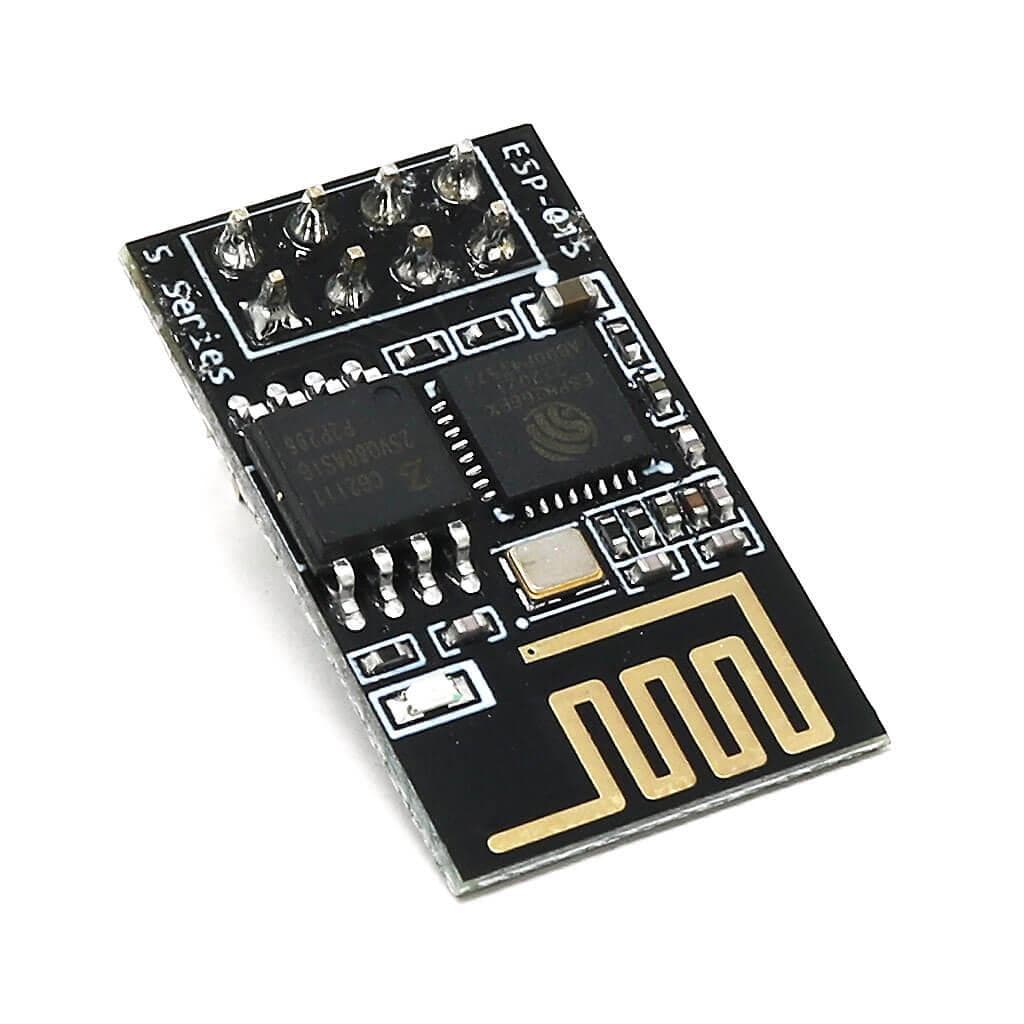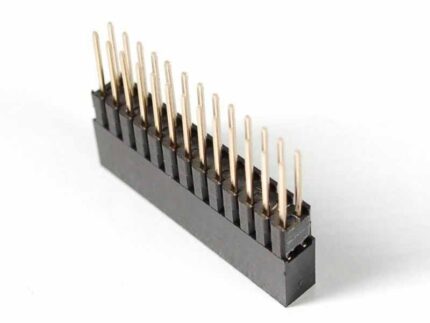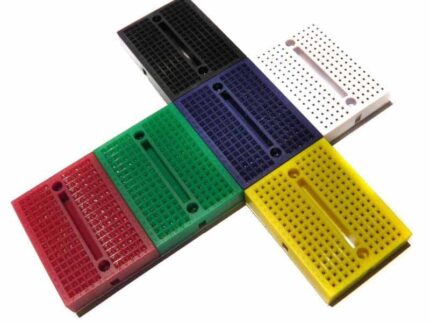ESP-01S WiFi Serial Transceiver Module (ESP8266)
The ESP-01S ESP8266 WiFi Module is a self-contained SOC with an integrated TCP/IP protocol stack that can give any microcontroller access to your WiFi network. Great for adding to a Maker Pi Pico in the dedicated ESP-01 slot!
The ESP8266 is capable of either hosting an application or offloading all Wi-Fi networking functions from another application processor. Each ESP8266 module comes pre-programmed with an AT command set firmware, meaning you can simply hook this up to your Arduino device and get about as much WiFi-ability as a WiFi Shield offers (and that’s just out of the box!).
The ESP8266 module is an extremely cost-effective board with a huge, and ever-growing, community. There are plenty of discussion happening in the official community.
This module has a powerful enough on-board processing and storage capability that allows it to be integrated with the sensors and other application-specific devices through its GPIOs with minimal development up-front and minimal loading during runtime. Its high degree of on-chip integration allows for minimal external circuitry, including the front-end module, which is designed to occupy a minimal PCB area. The ESP8266 supports APSD for VoIP applications and Bluetooth co-existence interfaces, it contains a self-calibrated RF allowing it to work under all operating conditions and requires no external RF parts.
There is an endless stream of information on the ESP8266, all of which has been provided by amazing community support. Under the Resources section, you will find many resources to aid you in using the ESP8266, even instructions on how to transform this module into an IoT (Internet of Things) solution!
This module is very low cost, but very simple. It doesn’t support SSL, or communication over SPI – just UART! It also doesn’t have a regulator on board and it can use big spikes of 300mA or more current at 3.3V, so if using with an Arduino an external 3V regulator is essential! (Seriously don’t try to power it from the 3.3V power pin the Arduino!). Also, the connector is kind of annoying and not breadboard-friendly, some female-to-male wires can help out to make it easier to plug into a breadboard.
That said, it does do the job for a very low price, and can be used as a UART-at-9600-baud to WiFi adapter using example code for Arduino or, for the really adventurous, programmed directly using an SDK
Features
- Model: ESP-01S
- Power: 3.3VDC (use a 3.3V voltage regulator! NO level shifter is needed as the IO pins are 5V tolerant)
- 802.11 b/g/n protocol
- Wi-Fi Direct (P2P), soft-AP
- Integrated TCP/IP protocol stack
- Integrated TR switch, balun, LNA, power amplifier, and matching network
- Integrated PLLs, regulators, DCXO, and power management units
- +19.5dBm output power in 802.11b mode
- Integrated temperature sensor
- Support antenna diversity
- Integrated low power 32-bit CPU could be used as an application processor
- Power down leakage current: < 10 uA
- I/O interfaces:
- SDIO 1.1/2.0
- SPI
- UART
- Communication interfaces:
- STBC
- 1×1 MIMO
- 2×1 MIMO
- A-MPDU & A-MSDU aggregation & 0.4 ms guard interval
- Wake up and transmit packets in < 2 ms
- Standby power consumption of < 1.0 mW (DTIM3)
Package Contents
- 1 x ESP-01S WiFi Serial Transceiver Module (ESP8266)
Resources
- Cytron ESP Firmware Github
- esp8266ex Datasheet
- esp8266 Hardware matching guide
- esp8266 AT instruction
- esp8266 AT command examples
- ESP8266 Community Forum
- Using ESP8266, a tutorial byPropellerpowered, at Instructables
- NURDSpace Wiki
- More details










